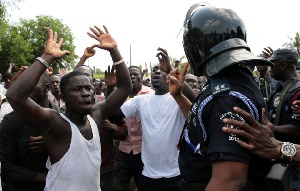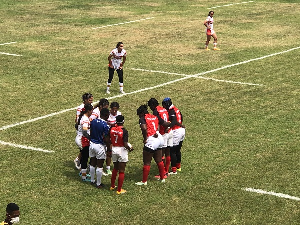By Nkunimdini Asante-Antwi
The most pressing public policy concern in these times is unemployment, particularly among the youth. Albeit officially reported to be 10.9 percent by Ghana Statistical service in 2013 (see GLSS6, p.57), that figure does not account for those who are discouraged and have consequently stopped searching for work.
Discouraged jobless persons are excluded from the economically active population and therefore unaccounted for in the workforce. Hence the official youth unemployment rate may be a romantic smoke screen that obscures a more accurate representation of reality.
The reality is much more alarming once we employ a more broad definition; joblessness.
A recent World Bank report by Sara Johansson titled “Landscape of Jobs in Ghana” (also cited by Dr. Mahamadu Bawumia in his recent economic lecture) found that joblessness among Ghanaian youth was 48%. The high rate of joblessness is a major policy concern.
What is even disconcerting is that such key macroeconomic data that feeds public policy response is founded on an incomplete foundation. Program design for addressing youth joblessness first needs to have a clear quantitative view of the problem.
It is my respectful view that 48% joblessness or the 10.9% youth unemployment as reported by World Bank and Ghana Statistical Service respectively are all understatements.
The following are the reasons why:
Ghana’s Youth Policy document (para.3.2, p.5) defines youth age bracket as 15-35yrs.
Ghana’s official definition of youth is consistent with that of African Union as contained in the AU Youth Charter (p.11).
Government of Ghana, effectively uses 15-35years in administering its youth program under Youth Employment Authority (YEA) and Youth Enterprise Support (YES).
The question naturally arises: why then does the policy conversation on youth unemployment reporting, focus on the age bracket 15-25 years, effectively cutting off persons between 25-35yrs?
One would ask, what difference does it make? Well first, understating the problem, from both a causative and quantitative view, ignites a sense of urgency needed to tackle the issue comprehensively. Incomplete diagnosis leads to inaccurate prescription.
Secondly, an incomplete view creates a false sense of security that the problem may not be as bad as it is. It causes complacency misplaced policy priorities.
Thirdly, it pollutes the governance environment and destroys all meaningful communication between the government and the governed, as legitimate calls for redress ends up being misconstrued as political propaganda.
If indeed the World Bank used 15-24 years to estimate joblessness at 48%, then surely the actual jobless situation among Ghanaian youth, which covers persons between 15-35 years, is at least 48%.
The same principle applies to Ghana Living Standards Survey by Ghana Statistical Service. Actual youth unemployment rate lies on the band between 10.9% and 14.7% and not the 10.9% reported for persons between 15 years and 25years.
The political and bureaucratic class must be consistent in how development data is used for policy formulation. Honesty is still the best policy.
Opinions of Tuesday, 13 September 2016
Columnist: Nkunimdini Asante-Antwi



















